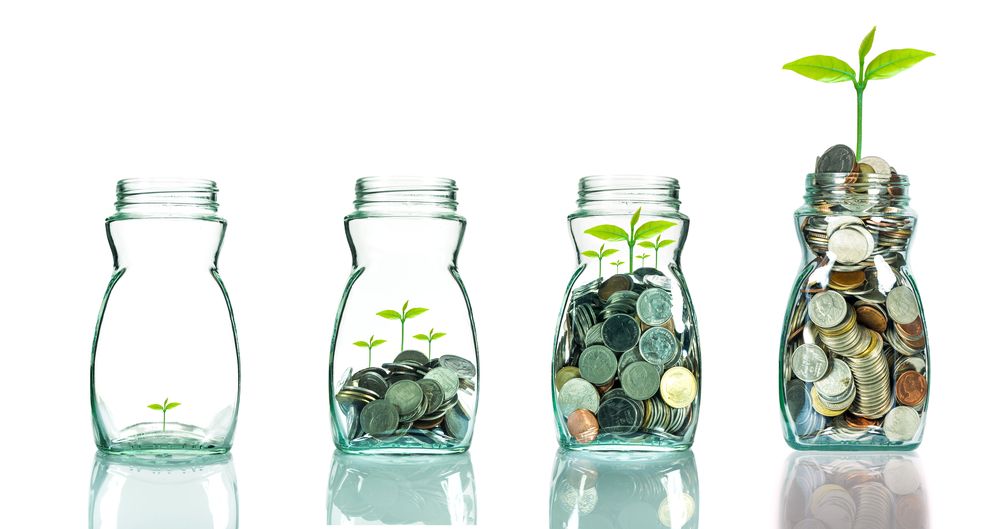
In the world of personal finance, saving money is just as crucial as earning it. After all, it’s not about how much you make, but how much you keep—and grow. Whether you’re saving for an emergency fund, a major purchase, or just looking for a place to park your cash, understanding the difference between high-yield savings accounts and regular savings accounts can help you maximize your earnings. Let’s dive into the nuances of each to help you make an informed decision about where to stash your savings.
Understanding the Basics of Savings Accounts
Before delving into the specifics of high-yield versus regular savings accounts, it’s essential to grasp the basic purpose of a savings account. A savings account is a deposit account held at a financial institution that provides a safe place to store money while earning interest. These accounts are designed for individuals to save for the future, and they typically offer easier access to funds than certificates of deposit (CDs) or investment accounts.
A regular savings account is often the most basic type offered by banks and credit unions. It allows you to deposit money, earn a modest amount of interest, and withdraw funds up to a certain number of times each month. On the other hand, high-yield savings accounts are a type of savings account that offers a significantly higher interest rate, helping your money grow faster. It’s important to note that the interest rates for both types of accounts can vary depending on the financial institution and prevailing economic conditions.
High-Yield Savings Accounts: Maximizing Your Interest Earnings
High-yield savings accounts are attractive for those looking to earn a better return on their savings without taking on the risks associated with investing in the stock market. These accounts typically offer interest rates that are much higher than the national average for regular savings accounts. The higher interest rate can result in significantly larger earnings over time, especially when you factor in the power of compound interest.
Compounding occurs when the interest earned on your savings is reinvested to earn more interest, effectively allowing your money to grow at an exponential rate. With a high-yield savings account, the higher interest rate means that the compounding effect is more pronounced, potentially leading to a substantial increase in your savings without any additional effort on your part.
Accessibility and Convenience: Evaluating Account Features
When comparing high-yield savings accounts to regular savings accounts, it’s crucial to consider how easily you can access your money. While both types of accounts allow for withdrawals and transfers, there may be differences in the number of allowable transactions per month and potential fees for exceeding those limits. High-yield savings accounts may also be offered primarily by online banks, which can provide more competitive rates due to lower overhead costs.
Online banks offering high-yield savings accounts often provide a high level of convenience with features such as mobile banking, electronic transfers, and remote check deposit. However, if you prefer in-person banking or need regular access to physical branches, you might find that a regular savings account at a local bank or credit union is more suitable for your needs.
The Impact of Fees and Minimum Balance Requirements
Another aspect to consider when choosing between high-yield and regular savings accounts is the potential impact of fees and minimum balance requirements. Some high-yield savings accounts may require a higher minimum balance to maintain the account or to qualify for the best interest rates. Additionally, they might have monthly maintenance fees that could eat into your earnings if not managed properly.
In contrast, regular savings accounts might have lower minimum balance requirements and could be more forgiving with fees, making them a more accessible option for those just starting to build their savings. It’s essential to read the fine print and understand the fee structure of any savings account before opening it to ensure that it aligns with your financial goals and habits.
Rate Variability and Economic Factors
Interest rates on savings accounts are not fixed; they can fluctuate based on broader economic factors, such as the Federal Reserve’s monetary policy and inflation rates. High-yield savings accounts often have variable interest rates that can change at any time, potentially affecting the amount of interest you earn. It’s important to stay informed about rate changes and to compare rates periodically to ensure that your account remains competitive.
Regular savings accounts also have variable rates, but since they are typically lower to begin with, the impact of rate changes may be less noticeable. However, in a rising interest rate environment, both types of accounts could see rate increases, though high-yield accounts will generally maintain a higher rate relative to regular accounts.
Deciding between a high-yield savings account and a regular savings account ultimately depends on your personal financial situation and savings goals. If you’re looking to maximize your interest earnings and are comfortable with online banking, a high-yield savings account could be an excellent choice. On the other hand, if you prioritize easy access to physical branches and lower minimum balance requirements, a regular savings account may be more suitable.
No matter which type of savings account you choose, the most important step is to start saving. By understanding the differences between high-yield and regular savings accounts and considering factors like accessibility, fees, and economic conditions, you can make an informed decision that helps you build a more secure financial future. Remember that the best savings strategy is one that aligns with your needs and helps you progress toward your financial goals, so take the time to evaluate your options and choose wisely. With the right savings account, you can watch your money grow and enjoy the peace of mind that comes with a solid financial foundation.
